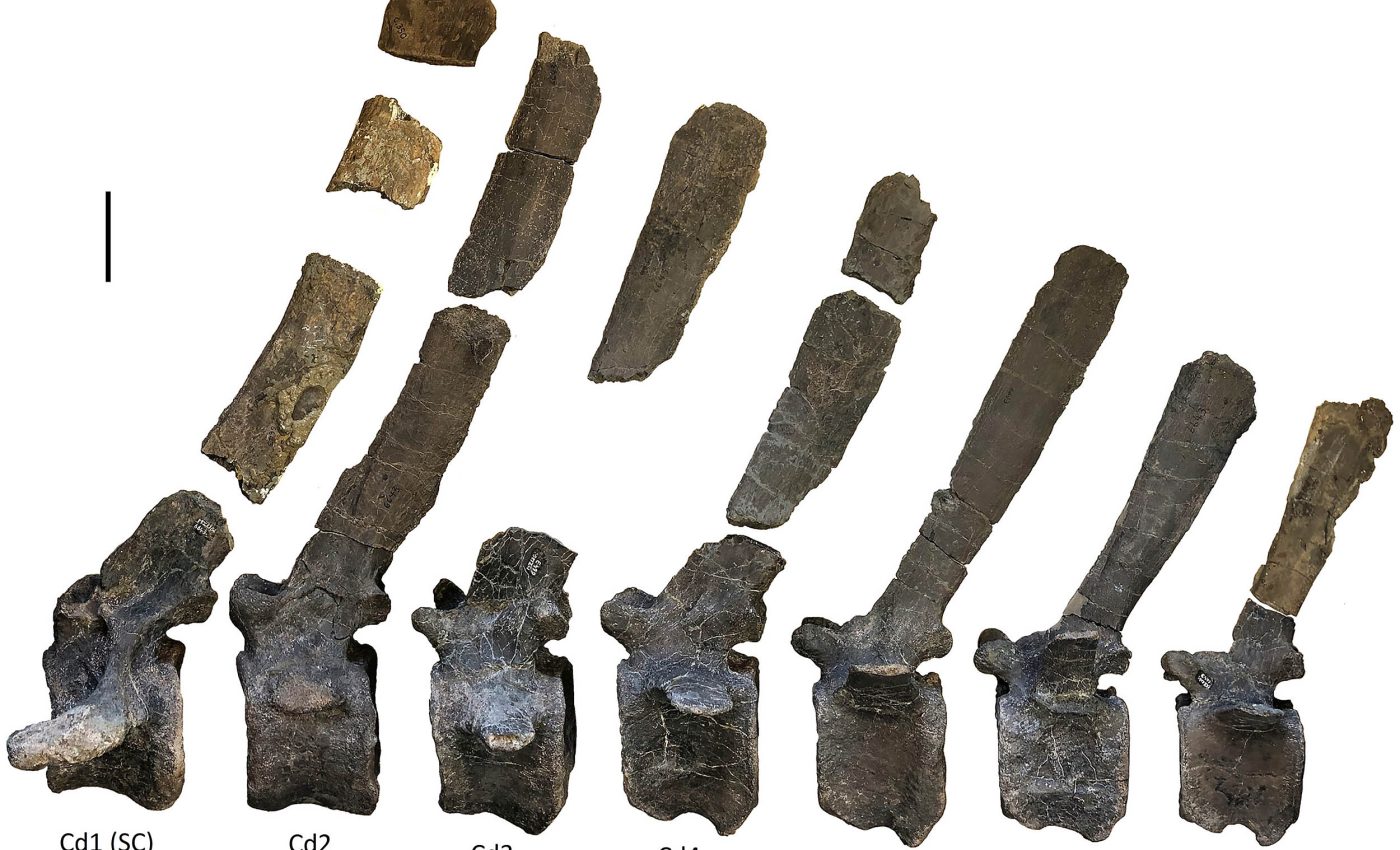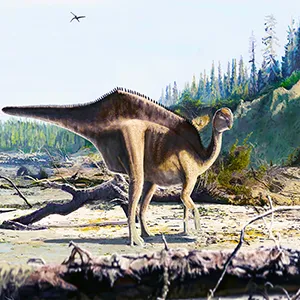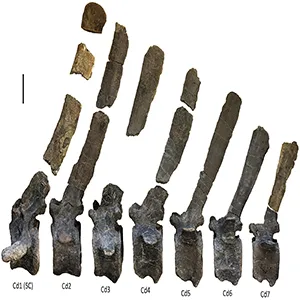
New dinosaur has a strange and still unexplained 'ornate sail' on its back
A set of Early Cretaceous fossils from England’s Isle of Wight has turned out to be something new. The bones of Istiorachis macarthurae, dated to about 125 million years ago, sat in a museum for years before being rediscovered and carefully studied.
Scientists soon realized these fossils belonged to a distinct, plant-eating dinosaur with an eye-catching sail along its back and the front part of the tail.
The research was led by Jeremy Lockwood, a retired general practitioner pursuing Ph.D. studies at the University of Portsmouth and the Natural History Museum in London.
“While the skeleton wasn’t as complete as some of the others that have been found, no one had really taken a close look at these bones before,” Lockwood explained.
“It was thought to be just another specimen of one of the existing species, but this one had particularly long neural spines, which was very unusual.”
Istiorachis macarthurae tells a story
Lockwood and his team came up with the name Istiorachis macarthurae by combining “Istio” (refers to a sail), “rachis” (points to the spine), and the species name honors Dame Ellen MacArthur, the celebrated sailor from the Isle of Wight.
The name reflects what the bones show: unusually tall neural spines that would have supported a visible ridge in life.
Neural spines are the bony fins on top of each vertebra. In most animals they’re short.
In Istiorachis macarthurae, several spines on the back and the front portion of the tail rise far above the main body of the vertebrae. That extreme height points to a soft-tissue sail in life.
The specimen that defines the species includes parts of the neck, back, sacrum, tail, and pelvis, with some spines shaped and grooved in ways that set the animal apart from other iguanodontians.
These features are not scattered at random. Their placement along the torso and front tail strengthens the case for a display structure that other animals could see from a distance.
The tall spines function as strong, repeatable signals in the skeleton, not one-off quirks.

Deciphering the sail
Scientists have long debated the point of tall spinal sails on other animals. The main ideas fall into three groups: temperature control, energy storage, and visual display.
A radiator-style sail would help soak up morning sun or shed heat in the wind. A fatty hump could bank reserves during lean times.
But when spines are very tall and concentrated in showy zones, the display argument tends to carry more weight.
In social animals, visible structures can help individuals sort out rivals, pick mates, or keep peace without constant fights.
Istiorachis macarthurae fits that pattern. Its spines resemble billboards more than radiators, with height amplified beyond what a purely mechanical or thermal function would likely require.
In that light, a display role rises to the top – they were probably just showing off to attract mates.
Finding a place on the family tree
Istiorachis macarthurae belongs to the iguanodontians, relatives of Iguanodon and ancestors of the later duck-billed hadrosaurs.
Within that larger clan, it groups among styracosternans – generally medium- to large-bodied herbivores that probably moved on all fours most of the time and could rear up when needed.
The Wessex Formation, which preserves rivers, floodplains, and periodic wildfires, has yielded many iguanodontian discoveries.
It records a stretch in the Early Cretaceous when these plant-eaters were branching into new forms as ecosystems shifted.
Finding Istiorachis macarthurae
This was not a brand-new dig. The key step was a fresh, systematic look at fossils already in the Dinosaur Isle museum collection.
Museum drawers work like time capsules: specimens gathered decades ago can solve today’s puzzles once new comparisons or methods are brought to bear.
Here, detailed study of vertebrae and pelvic bones – compared with a wider catalog of iguanodontians – showed the pieces did not match known species, justifying the new name.

The rise of tall spines
The study also asked when and how elongated neural spines emerged across the broader group. Modest spine growth appeared by the Late Jurassic within Ankylopollexia, then became fairly common by the Early Cretaceous.
True hyper-elongation – spines several times the height of the vertebrae – shows up only in certain lineages and windows of time.
That patchy distribution hints that no single cause explains every case. Instead, different pressures likely acted in different evolutionary branches, with visual display taking a central role for forms like Istiorachis macarthurae.
Learning from Istiorachis macarthurae
Istiorachis nudges our view of herbivorous dinosaurs away from a strict focus on teeth and speed. Social signals mattered. Bodies carried cues that could change who got noticed, who won standoffs, and who reproduced.
Sexual selection can favor traits that do not boost running or biting yet still spread because they influence social success.
There is also a practical takeaway – fossil collections are living resources. New species can emerge from old boxes when someone asks a sharper question, applies updated comparisons, or notices a feature that had been hiding in plain sight.
The work draws a line from museum shelves to fresh science, and from a single skeleton to broader patterns in how dinosaurs evolved striking features that other animals could not ignore.
The full study was published in the journal Papers in Paleontology.
—–
Like what you read? Subscribe to our newsletter for engaging articles, exclusive content, and the latest updates.
Check us out on EarthSnap, a free app brought to you by Eric Ralls and Earth.com.
—–













